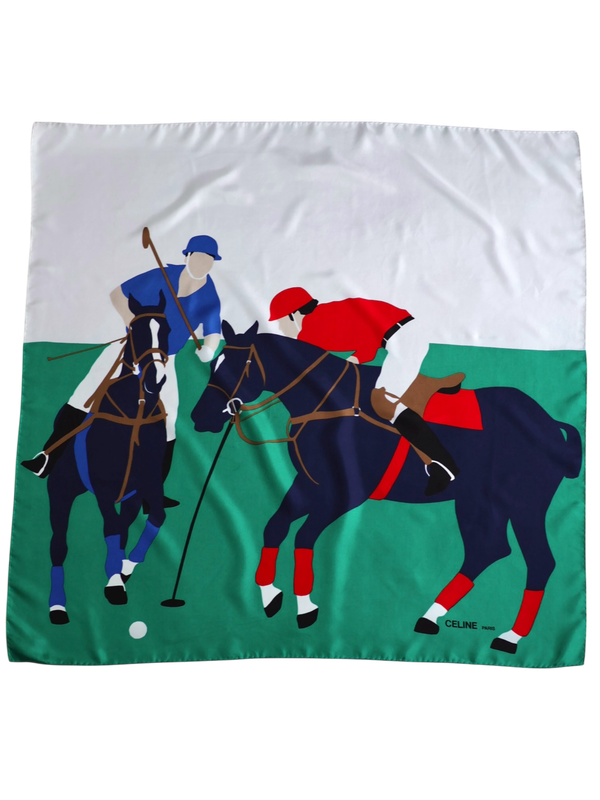Black Friday just opened
Celine Polo Silk Scarf: A Story Woven in Red and Blue
In a world saturated with trends, few pieces manage to hold the weight of history, art, and movement the way a vintage scarf can. The Celine Polo silk scarf is one of them. A tableau of elegance, tension, and quiet power, it captures a single suspended second of an equestrian match, frozen in silk. Two riders charge toward the ball, one dressed in red, the other in blue. But beneath the minimalist graphic lies something richer—a story that blends sport, symbolism, and French fashion heritage.
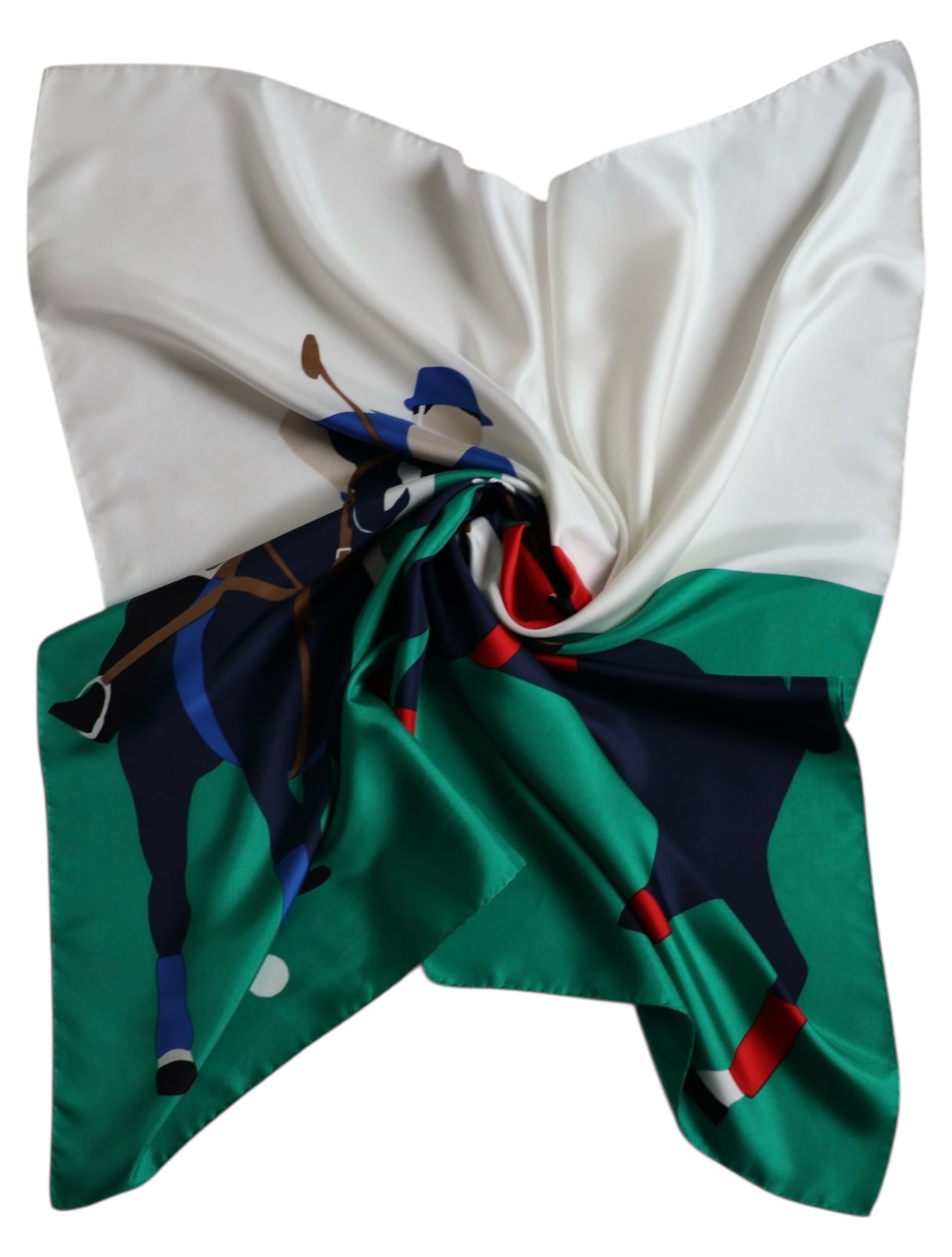 |
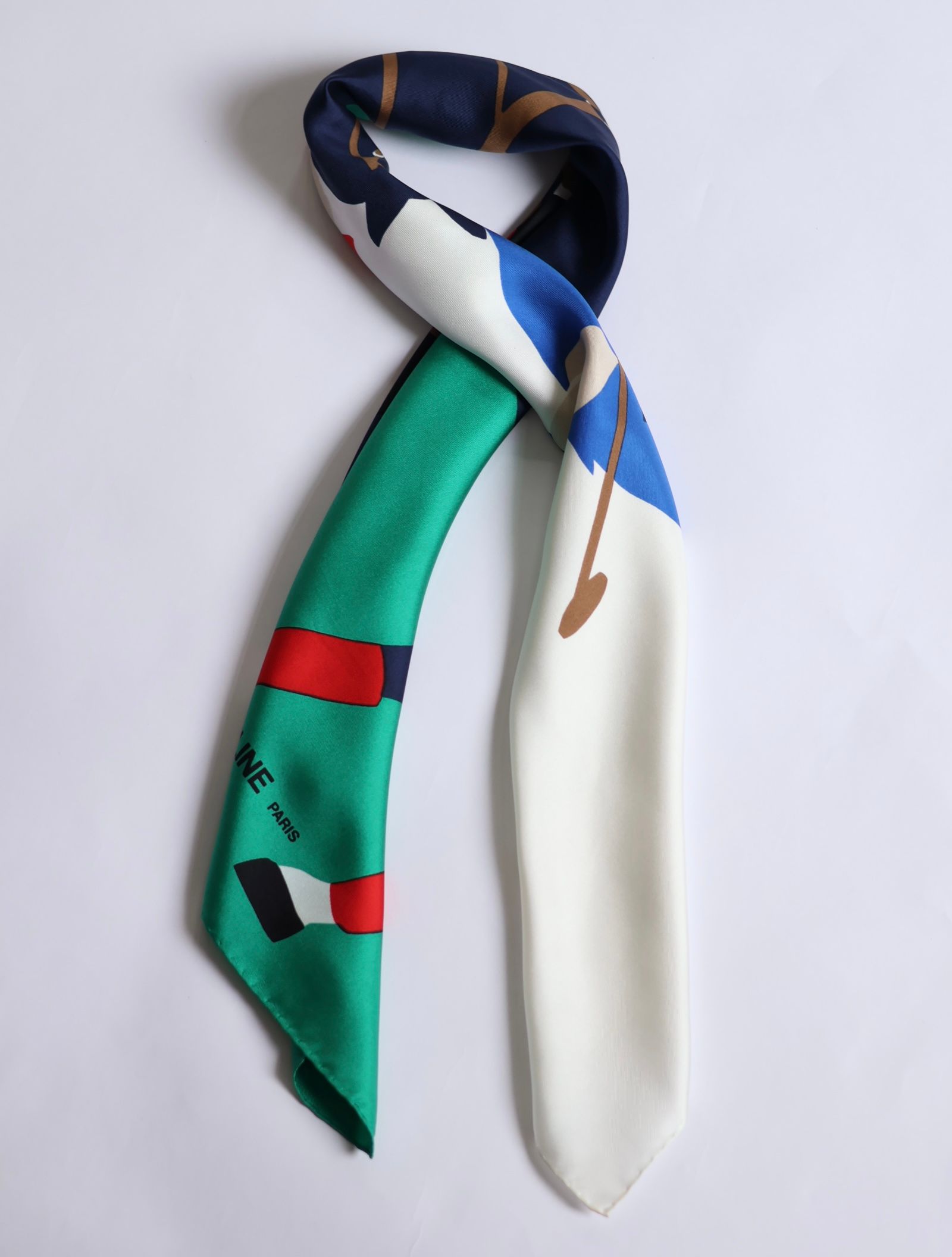 |
The Art of the Duel: Red and Blue in Polo Tradition
The color symbolism in polo isn’t accidental. Red and blue have long stood on opposite sides of battlefields and sporting arenas. In the early days of equestrian sports, bright colors served a functional purpose—to distinguish riders during fast-paced games. But over time, colors evolved into emblems of legacy, much like medieval heraldry. Red, fiery and assertive, evokes power, drive, and victory. Blue speaks of loyalty, calmness, and strategic precision.
These aren’t just decorative choices; they carry the energy of ancient rituals into the elegance of the modern accessory. On the Celine Polo scarf, these shades meet and confront each other in balanced opposition, hinting at themes of rivalry, respect, and motion locked in perfect equilibrium.
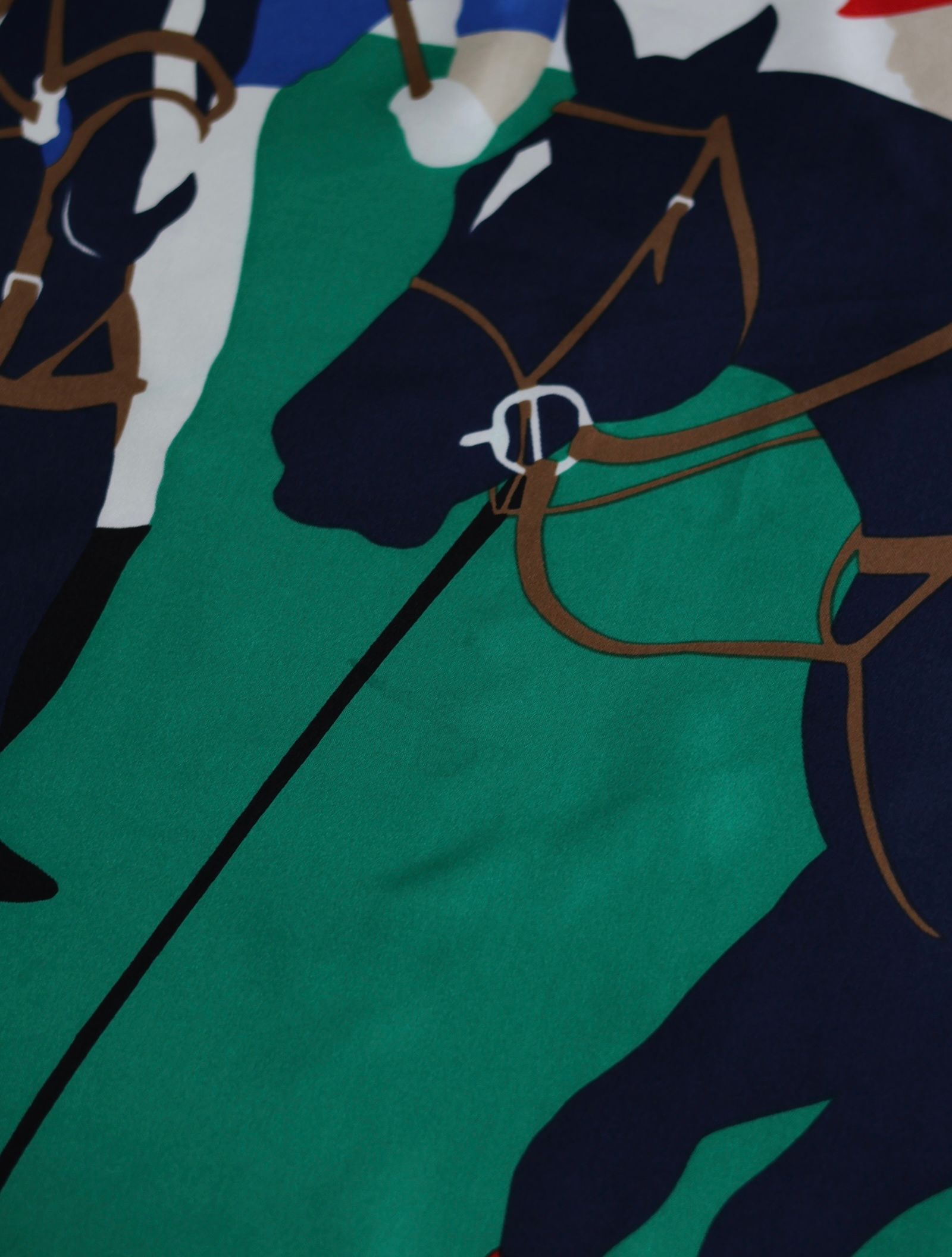 |
Equestrian Roots in Celine's DNA
To understand why this scarf feels so resonant, one must return to the heart of the brand itself. Celine was founded in 1945 by Céline Vipiana, a woman designing for women. Though originally focused on children’s footwear, the brand evolved into a full-fledged fashion house known for combining practicality with elegance. And embedded in its archives are unmistakable nods to equestrian culture—a realm where strength and poise meet.
In the 1970s and 80s, Celine released a series of silk scarves featuring motifs from horse racing, fox hunting, and polo. These weren’t just lifestyle images; they were tributes to French sporting aristocracy. The brand’s Sulky logo (a horse-drawn cart) became a subtle yet enduring symbol of movement and grace, linking Celine to the tradition of saddle-makers like Hermès, but with its own understated tone.
The Polo scarf belongs to this visual lineage. The hand-rolled edges, refined color palette, and compositional balance all speak to a golden age of European scarf design—one where illustration met purpose, and where accessories weren’t just accents but emblems of cultured taste.
Minimalist Graphics, Maximal Meaning
One of the most compelling elements of this piece is its artistic restraint. There are no flourishes, no background landscapes, no distractions. The riders and their horses are rendered in flat, saturated color blocks—navy, green, crimson, ivory—against a clean field. The design leaves room to breathe, encouraging the eye to follow the lines of movement and tension.
This use of space is not only aesthetic. It mirrors the nature of polo itself—a sport where pauses are rare, and elegance must emerge from speed. In capturing that paradox, the scarf becomes more than a beautiful object. It turns into a study of control.
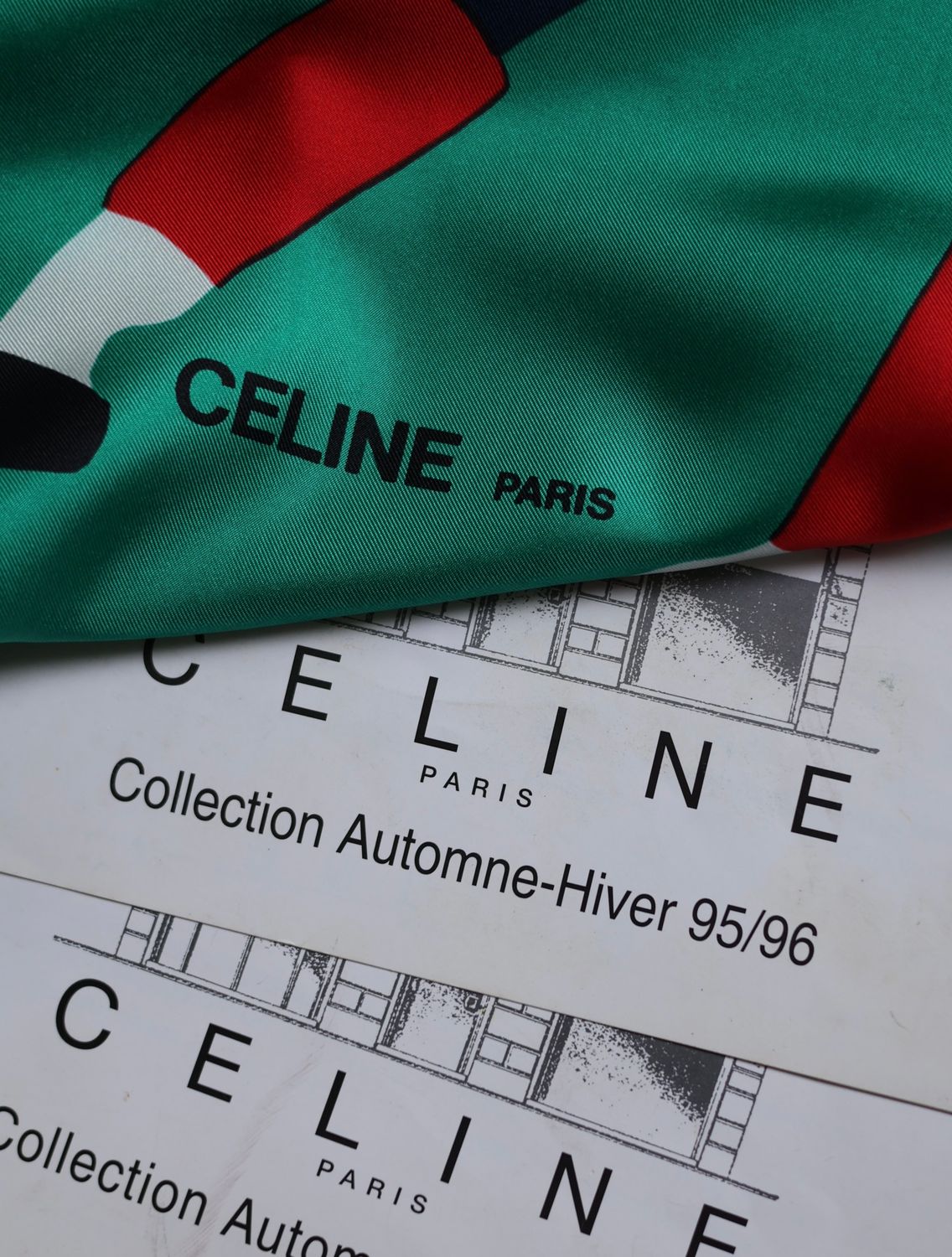 |
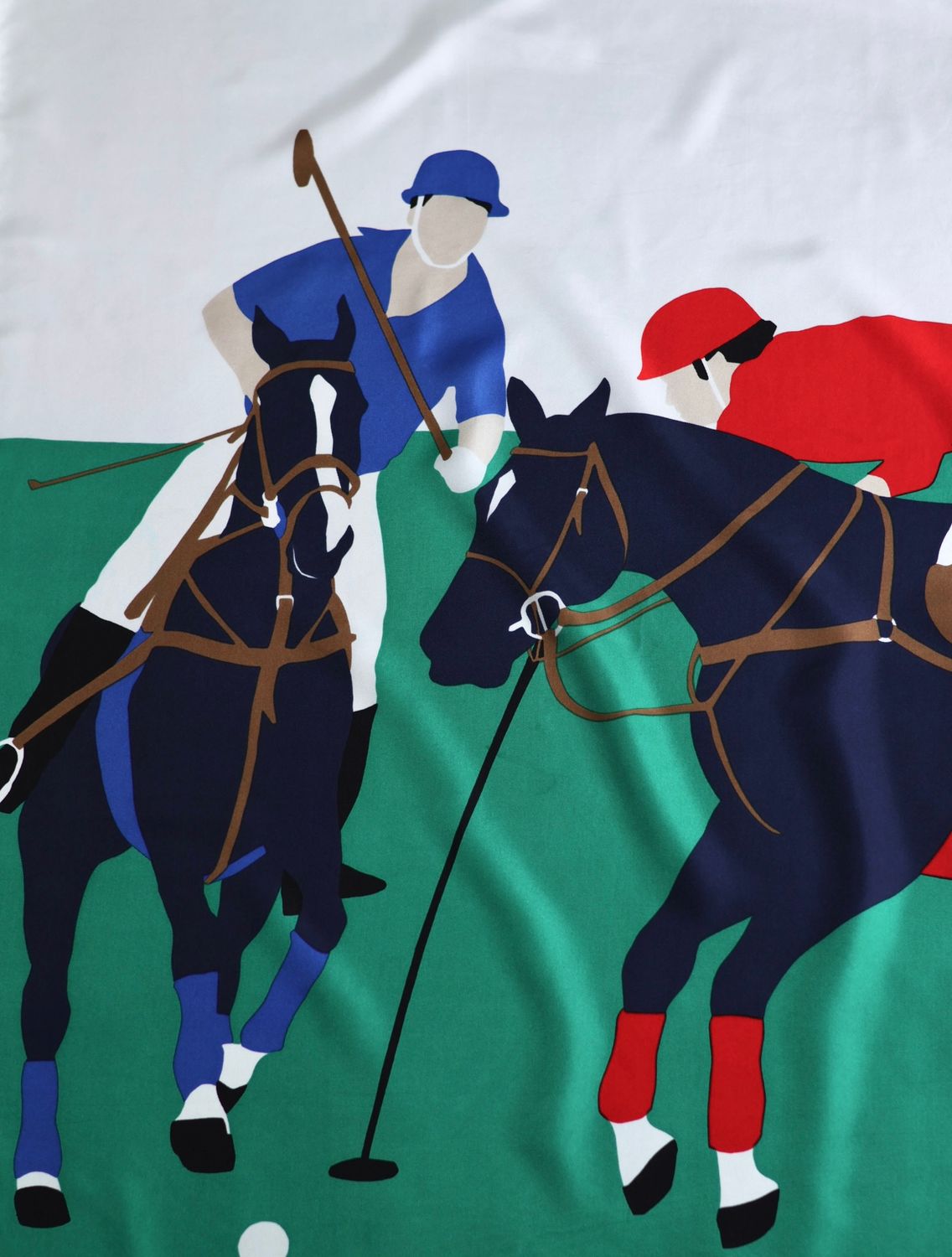 |
Vintage Celine: Why It Matters
Vintage fashion is not a trend; it’s a philosophy. It values craftsmanship over mass production, narrative over novelty. And within that philosophy, vintage Celine occupies a unique space. Unlike more flamboyant houses, Celine has always embraced quiet sophistication. The scarves of the Vipiana era reflect this ethos—refined, intelligent, and effortlessly wearable.
Silk scarves, especially those made in Italy during the mid-to-late 20th century, are masterpieces of textile design. The quality of the silk, the density of the print, the richness of the dye work—these elements simply aren’t replicated in fast fashion. When you hold a vintage Celine scarf, you’re not just holding a design. You’re holding a chapter of fashion history.
What’s more, each scarf is unique. With only one available at Poetro, the Celine Polo is a one-of-a-kind find. And in a world that increasingly values individuality, that rarity becomes its own kind of luxury.
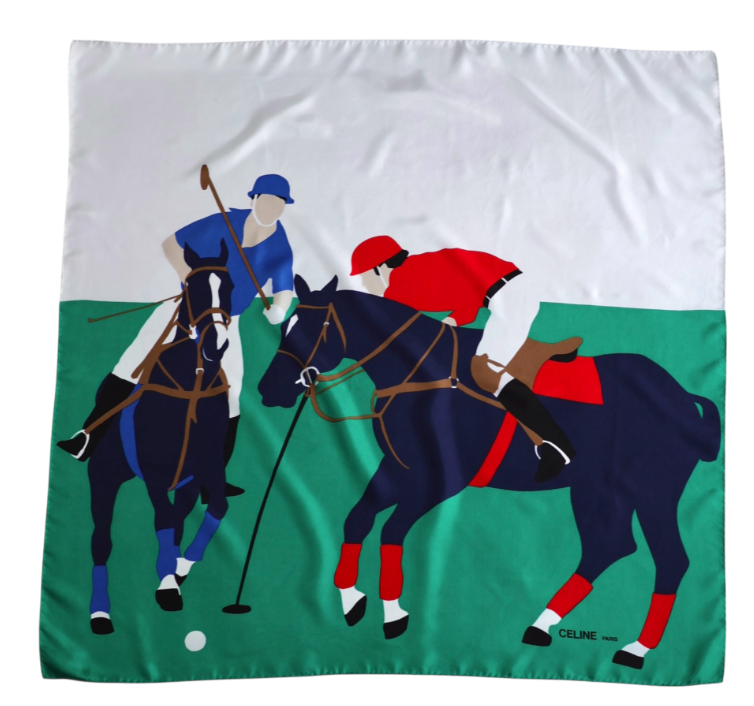 |
From Battlefield to Backdrop: The Cultural Power of Color
Let’s return to the colors. Red and blue have danced through history—on coats of arms, military flags, and royal regalia. In art, red is passion and rebellion; blue is introspection and grace. In fashion, they serve both contrast and harmony, and together, they create visual tension that never grows old.
In the case of this scarf, they become characters. Red charges forward, blue holds ground. The wearer chooses which energy to embody, or whether to play the mediator. Either way, the scarf allows for a subtle expression of attitude, one that changes depending on how it’s styled and what it’s paired with.
Styling the Celine Polo Scarf
Silk scarves are among the most versatile accessories, and this one is no exception. Here are just a few ways to wear it:
- Folded into a triangle and tied at the neck for a classic French look
- Wrapped around the handle of a leather bag for a sophisticated twist
- Styled as a bandeau top under a blazer for a daring mix of vintage and modern
- Knotted loosely over a white shirt for a refined, equestrian-inspired look
- Worn as a headscarf for Riviera elegance
Thanks to its generous dimensions (88 x 85 cm), the Celine Polo scarf offers a rich canvas for experimentation. Every fold reveals a new composition, a different emphasis on color or form.
A Poetro Perspective: How We Curate Vintage
At Poetro, we don’t just sell vintage. We preserve it. Each piece is hand-selected for its condition, craftsmanship, and design integrity. Our Celine Polo scarf has been professionally cleaned, carefully inspected, and is in excellent vintage condition with minimal signs of wear. It arrives ready to wear, packed with love from our studio in Nice, France.
Our focus is always on authenticity and story. We source from trusted suppliers and estates across Europe, choosing only those pieces that we ourselves would be proud to wear or collect. We believe that buying vintage is not just a style choice—it’s a celebration of enduring beauty.
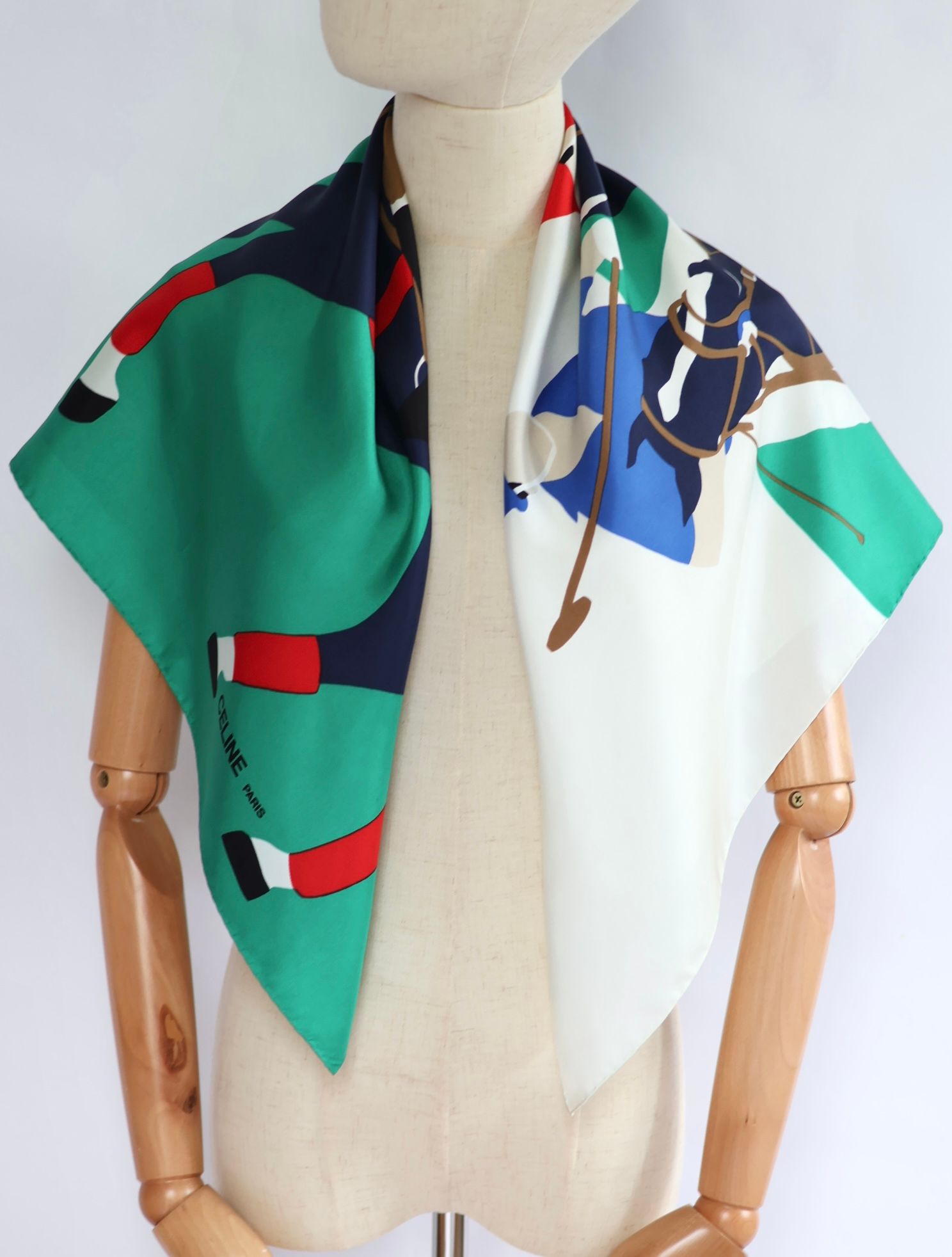 |
Final Notes: Elegance, Motion, Legacy
The Celine Polo scarf is more than fabric. It’s a moment suspended. A rivalry played out in color. A symbol of heritage, precision, and quiet strength. In an era of endless noise, this scarf offers something rare: clarity. It tells a story in one glance. It invites movement without chaos. And it honors a time when fashion wasn’t just about dressing up, but about embodying a point of view.
There is only one available. If it speaks to you, don’t hesitate. Some pieces aren’t meant to be mass-produced. They’re meant to find the right owner.
Refine by
Display prices in:EUR
